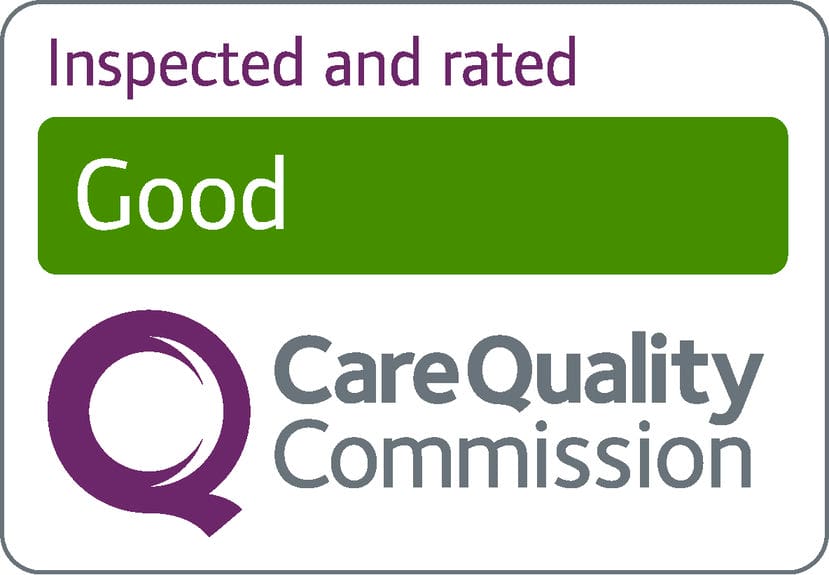Known to be one of the gentlest AHAs due to their large molecule size, mandelic acid packs a punch when it comes to hyperpigmentation, rosacea symptoms, dull skin, and signs of ageing.
A great choice for sensitive skin, mandelic acid is also one of the best choices for darker complexions. In fact, there aren’t many of us who might not benefit from a Mandelic Acid chemical peel. Let’s dive into this treatment in a little more depth to see what exactly it does for your skin…
Why Is Mandelic Acid Good for the Skin?
Mandelic acid is found in both in-clinic treatments (commonly chemical peels), as well as skincare products that are used at home. This ingredient is good for the skin because it has an anti-inflammatory effect on it; a vasoconstrictive effect on the skin; regulates your oil production; and has a powerful exfoliating effect.
We use it to treat poor skin texture, signs of skin ageing, rosacea and melasma symptoms, inflammatory acne symptoms, some forms of hyperpigmentation, and those that require a powerful exfoliation. We also use it for those with sensitive skin who wish to reap the benefits described.
Where Does Mandelic Acid Come From?
Originally, this alpha hydroxy acid (AHA) is derived from bitter almonds. ‘Mandel’ is German for ‘almond’.
These days, we use synthetically made mandelic acid that has been made in labs.
Will Mandelic Acid Cause Acne?
No, acne will not be caused by using mandelic acid. Several internal and external factors cause acne and, as mandelic acid does not block the skin, the opposite as it’s a great exfoliator, it will not contribute to causing acne.
It is worth noting that on some occasions, as with all chemical peels and exfoliating products, mandelic acid can cause spots lying under your skin’s surface to come out to the surface more quickly than it normally would have.
This chemical peel is used to treat acne because it helps to regulate oil production, unblocks pores, and reduce inflammation.
What’s Mandelic Acid Good For?
Improving signs of skin ageing; some forms of hyperpigmentation; managing melasma symptoms; skin redness; managing rosacea symptoms; skin inflammation; acne; dull skin.
The EnerPeel Mandelic Acid chemical peels are the #1 chemical peel used in the Indian subcontinent for antiaging; in the UK, we call it a ‘summer peel’ because it’s ideal to use during hotter months and on all skin colours.
Which Mandelic Acid Is the Best?
At our Hertfordshire skin clinic, we’ve selected the EnerPeel Mandelic Acid chemical peel treatment for our clients after decades of performing this treatment and working with various brands. EnerPeel Mandelic Acid is medically licensed to treat vascular rosacea and telangiectasia, aka facial broken veins or spider veins, as well as being able to treat pigmentation and signs of ageing.
EnerPeel has a patented carrier solution (the liquid that the mandelic acid comes in and is applied to the skin) which holds back the activity of the ingredients until it’s been absorbed. This does not reduce the activity of the mandelic acid, rather it is improving the absorption of the active ingredient. This will not only mean that you’re getting enhanced penetration of the ingredient, but it will be less irritating to the skin in comparison to other mandelic products as it’s not sitting just on the surface of your skin.
EnerPeel mandelic acid chemical peels are an in-clinic treatment that is performed by trained professionals.
Is Mandelic Acid an Exfoliant?
Yes. Mandelic acid, as with all chemical peels, is an exfoliating solution. It does not physically rub away dead skin cells as, say, a scrub does. It breaks down the ‘glue’ that holds dead, dull skin cells onto the surface.
The result is smoother and younger-looking and feeling skin with any other additional action that the specific peel has on the skin, for example, reducing redness.
Mandelic Acid Is AHA or BHA?
Mandelic acid is an AHA (Alpha Hydroxy Acid). It tends to be less irritating to the skin than other AHAs, making it the ideal choice of chemical peels for those with sensitive skin; this is because it has larger molecules than others, allowing it to go into the skin more slowly.
Is Mandelic Acid Near Me?
*Raises hand* We offer mandelic acid chemical peel treatments at our Hertfordshire skin clinic.
Mandelic Acid Not Working?
Hmm, mandelic acid not working for you?
Firstly, what are you trying to treat? Mandelic acid can be a great skin treatment, but it’s not indicated to treat everything, so make sure that your expectations of what it can do for you are right.
Look at the percentage you’re using. At-home products are weaker than in-clinic mandelic acid chemical peels. It may be that the product is working but more slowly than you’d hope because of the strength; make sure you’ve given it a fair trial of at least 4-6 weeks of continuous use.
If you’re using a mandelic product under the guidance of a professional, have they booked you in a review session to see how you are getting on with the product and what you’ve achieved since starting it? It would be best to refer to them to get answers; they may adapt how you’re using your product if appropriate.
At-home products are great however, if the problem you’re trying to address is acute then it’s worth considering an in-clinic mandelic acid chemical peel which is likely to have more of an impact in a shorter space of time.
Mandelic Acid for Sensitive Skin?
It’s an ideal skin peel for those of us who have sensitive skin because one of its chemical properties is not to trigger redness, in fact, it’s used to control this concern, which is why it’s also an ideal rosacea treatment.
Mandelic acid is also less likely to cause irritation to the skin in comparison to other AHA chemical peels because it has a bigger molecule size and is, therefore, absorbed more slowly into the skin.
Mandelic Acid For Rosacea?
Mandelic acid has a vasoconstrictive effect on the blood vessels in your skin, helping to decrease flushing and overall redness. This chemical peel also improves the integrity of the blood vessels in the skin so that they function better.
Mandelic acid peels help to suppress reddening skin chemical reactions which is one of the most common symptoms of rosacea.
If you have rosacea and are struggling to manage your symptoms, you may find this information useful as our practitioners from our St. Albans skin clinic have given useful tips that you can implement at home to help manage your rosacea symptoms.
Mandelic Acid For Acne Scars?
No, we would not commonly recommend mandelic acid for acne scars at our skin clinic as there are other superior options for this particular concern. Some of the treatments we would recommend to our clients with acne scars include the Clear and Brilliant laser, PRP, and the Fraxel laser.
If you’d like to discuss treatment for acne scars, contact us today, and we’ll be happy to help.
Mandelic Acid Versus Glycolic Acid
Both popular and frequently used chemical peels at our St. Albans skin clinic, glycolic and mandelic peels each have a place in skincare routines. Ultimately your skin care practitioner will guide you towards the most appropriate type of chemical peel for you.
As a sweeping statement, mandelic acid is often best for sensitive skin and used as a rosacea treatment.
You may find the glycolic acid blog from this series on chemical peels useful to help compare the two skin peels.
Nurse Jane, from The Skin to Love Clinic, says: “Mandelic acid treatments are often initially thought of as rosacea treatments because of the incredible benefits they can offer those of us with the skin condition, however, the other benefits of mandelic acid shouldn’t be overlooked by those who wish to brighten, soften, smooth, and address some signs of skin ageing. Especially if you have sensitive or reactive skin or perhaps haven’t tried an AHA chemical peel treatment before.
At our skin clinic, we use Enerpeel Mandelic Acid peels on male and female clients of all ages and skin types, with varying concerns and goals to help them improve the look and feel of their skin. With us, treatment is always following on from a skin consultation so that we ensure the chemical peel type is correct for the individual and so that the client fully understands the treatment prior to having it.”
If you are considering a chemical peel in St Albans or a chemical peel in Hertfordshire and would like to visit us for a consultation to discuss your skin and all of the appropriate skin treatments for you, contact us today. We’ll be happy to help.
Disclaimer: This blog is not to be used for diagnostic purposes. We are all unique which means that our results, recovery and suitability for any type of treatment will vary. Always seek the advice of a professional should you have any health or cosmetic concerns or to discuss treatments specifically for you.





